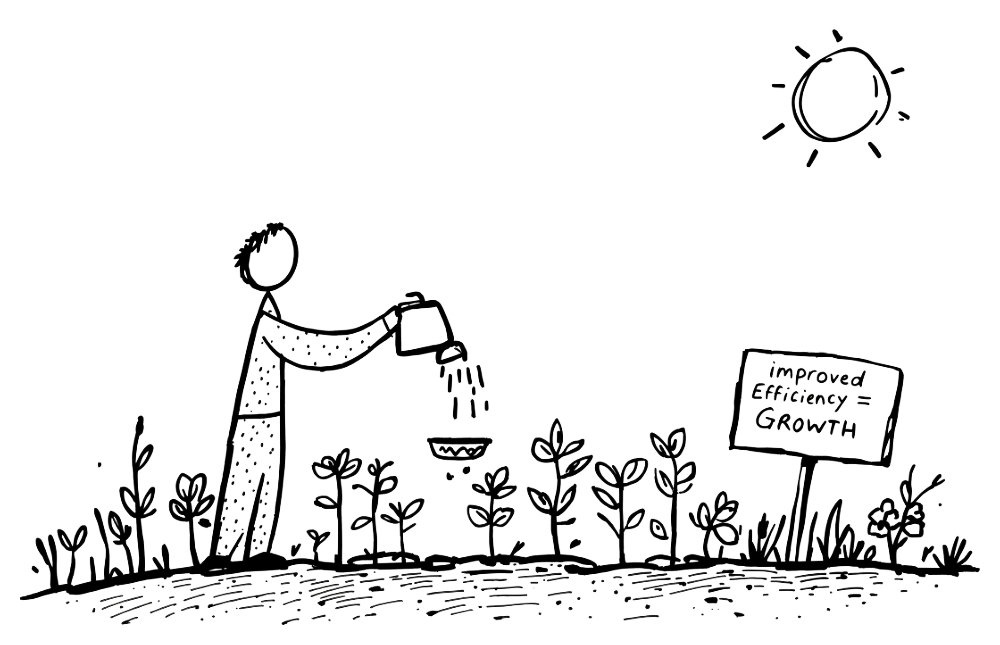Last Tuesday afternoon, I watched Helen—the quiet, dependable recruiter on our team—lean her forehead against a frosted glass partition. She held a stack of candidate profiles printed on misaligned office paper, each crammed with scribbled notes. The hum of our refurbished warehouse-turned-office café played in the background, beans grinding and espresso hissing. Helen had that look: the weary expression of someone who’s spent too many hours wading through applicant pools that felt more like tangled fishing nets than tidy talent streams.
Twenty minutes later, she admitted: “I’m feeling more like an admin clerk than a talent scout.” Her voice lowered as if sharing a secret. And this isn’t just our office’s problem. Across the HR landscape, recruiters are stuck in a repetitive dance: sifting through unruly spreadsheets, juggling outdated pipelines, and feeling more frantic than strategic. But let’s be honest: nobody ever wrote “I want to grow up and wrestle messy hiring processes” in their childhood diary.
Today’s recruiting efficiency gap is a symptom of old methods meeting modern challenges. The job market isn’t the tidy assembly line it used to be. Dynamic candidate pools shift faster than a kaleidoscope, technology evolves in the blink of an eye, and top talent can vanish if you hesitate like a startled deer on a highway.
So how do we end the panic pacing outside the lounge and embrace a more productive, human-centered hiring approach?
Setting the Scene: Recruiters as Time-Travelers
Picture a recruiter’s schedule in the old-school sense: They print out resumes, highlight key skills by hand, try to remember which spreadsheet column hides the candidate’s LinkedIn URL, and attempt to coordinate interviews like someone juggling flaming torches—one slip and there goes a top candidate. All that time spent on administrative nonsense means less time understanding the human behind the CV.
A recent wave of data (yes, the world is bursting with it) shows that organizations leveraging structured, tech-driven hiring processes can shorten hiring cycles by 30%. Another report suggests that over 60% of job seekers walk away if the hiring process feels impersonal. That’s time and talent slipping through our fingers. The old methods are as outdated as a phone book in a world of voice assistants.
Improving recruiter efficiency isn’t just a process tweak; it’s an essential evolution. Instead of time-traveling back to the 1990s, we need tools that keep pace with today’s dynamic landscape. That may mean investing in a next-generation ATS, which promises to transform talent acquisition into something smoother, sharper, and infinitely more human.

The Great Audit: Identifying Bottlenecks Before They Sink You
Before overhauling a system, you need to know where the leaks are. A candidate’s journey is like a ferry ride across a bay: if it’s smooth, they’ll enjoy the view; if it’s choppy and directionless, they’ll swim back to shore and wave goodbye.
Auditing your current hiring process is step one. Look at every stage—sourcing, screening, interviewing, decision-making—and pinpoint where time is bleeding. Is it the resume screening phase that eats up hours? Maybe the interview scheduling process resembles a chaotic bazaar where managers bicker over slots like haggling vendors.
A data-centric approach reveals the truth:
- If it takes two weeks to move a candidate from screening to interview, ask: why?
- If candidate communication is patchy, ask: what tool or habit is failing?
- If feedback loops are clunky, consider standardized interview templates or feedback forms that streamline the process.
Think of an audit as shining a flashlight into dusty corners. You might find old policies that made sense years ago but now only slow you down. Or perhaps you’ll discover your reliance on manual data entry is as absurd as using a butter knife for open-heart surgery.
Once the audit spots inefficiencies, embrace data-driven insights. Use metrics like time-to-hire or candidate satisfaction scores (yes, candidates do have feelings that matter) to guide your changes. The result? A crisp, reality-based blueprint for improvement.
Employer Branding: The Magnet That Draws Talent to You
Efficiency isn’t just mechanical; it’s psychological too. Think of your employer brand as a neon sign outside a trendy café—people notice it before they taste the coffee. If the brand message is scrambled or cold, top candidates might never enter your pipeline.
Re-evaluating your employer branding—how you tell your company’s story, what values shine through job postings, and how you interact with applicants—directly impacts efficiency. Why? Because a strong brand aligns expectations, attracts self-selecting candidates who fit your culture, and filters out those who’d never thrive there. Instead of pouring hours into screening misaligned applicants, you get quality leads from the get-go.
Imagine two companies:
- Company A’s job ad reads like a legal notice: “We need X years experience, Y skill set, Z degree.”
- Company B’s job ad feels like an invitation: “We’re looking for someone who thrives on inventing creative data solutions and loves a collaborative team.”
Who will capture a candidate’s heart and save recruiters from wading through junk applications? The second, obviously.
A well-tuned employer brand weeds out mismatch early, making every step downstream more efficient. It’s like using a fine-mesh sieve—only the right grains get through, reducing the time recruiters spend sifting gravel from gold.
Smart Tools & Automation: Let the Robots Do the Laundry
I once spent a whole afternoon inputting candidate data from email threads into a spreadsheet. Each name felt heavier than the last. Hours vaporized into an abyss of Ctrl+C, Ctrl+V drudgery. That’s the old world. Today, technology can step in, not to replace recruiters’ empathy but to free it up.
Automated screening tools, ATS platforms that integrate with LinkedIn or job boards, AI-driven resume parsing—these aren’t shiny gimmicks; they’re essential to reclaiming time. For example:
- An ATS can schedule interviews without endless email ping-pong.
- AI can filter resumes by critical keywords or competencies.
- Automated emails can keep candidates informed, boosting engagement while you sip your latte (or matcha, if that’s more your vibe).
Smart automation gives recruiters back their true strengths: strategic thinking, relationship-building, and empathy. Instead of drowning in admin work, recruiters can have meaningful conversations with prospects, understand their career aspirations, and make informed decisions.
And yes, consider tools like Machine Hiring that harness AI and predictive analytics. These systems learn from feedback—if you frequently favor candidates with certain backgrounds or skills, the AI refines its filters. It’s like training a digital assistant that anticipates your taste, ensuring your hiring pipeline isn’t just efficient but eerily intuitive.

When robots handle the grunt work, recruiters can finally breathe.
Crafting Clear Job Ads and Candidate Pipelines
Nothing clogs efficiency faster than vague job ads that attract random applicants. A well-crafted posting acts like a filter, drawing those who fit the bill and gently nudging away those who don’t. Studies indicate precise, compelling job descriptions can boost application quality by up to 30%. That’s 30% less time sorting through unqualified resumes. Consider it your ROI in clarity.
Also, remember that building talent pipelines—nurturing relationships with candidates before roles even open—slashes future sourcing time. Keep track of promising profiles, maintain connections with past applicants who almost made it, and watch how that “ready-to-call” list saves you weeks down the line.
Proactive candidate relationship management transforms a last-minute scramble into a smooth harvest of pre-vetted talent. Imagine you’re a chef: instead of rushing to the market before every meal, you’ve got a stocked pantry. Efficiency thrives in preparation.
Training and Alignment: The Human Factor You Can’t Ignore
All the tech in the world won’t save a broken process if your hiring managers don’t play ball. If a hiring manager drags their feet providing feedback or insists on changing role requirements mid-search, efficiency unravels. We’ve seen it: candidates left in limbo, recruiters tearing their hair out, and delays that make glaciers look speedy.
Establish a structured, collaborative hiring framework. Train hiring managers to give timely, standardized feedback. Hold regular check-ins to ensure everyone’s on the same page. This reduces friction at critical decision points and boosts velocity. It also reduces unconscious bias—structured interviews and consistent criteria mean you’re not reinventing the wheel with each new face.
When teams align on goals and processes, recruitment stops feeling like herding cats. It becomes a symphony where each player knows their cue. And guess what? Harmony leads to speed.
Keeping Tabs on Regulations and Market Trends
Recruitment doesn’t happen in a vacuum. Regulatory changes, remote work norms, evolving diversity and inclusion standards—these shape the talent landscape like tides shape a shoreline. A recruiter who ignores these shifts might end up knee-deep in compliance headaches or unable to attract modern candidates who value flexibility and inclusion over traditional perks.
Stay informed about industry norms, labor laws, and new-tech ethics. Subscribe to relevant HR newsletters, attend webinars, read industry reports. Knowledge is a compass that steers you away from dead ends and legal quagmires.
When recruiters anticipate changes instead of reacting blindly, they streamline processes proactively. That means fewer resets, less backtracking, and more efficient hiring cycles.
Don’t Let Good Talent Slip Away
A frantic, disorganized hiring process sends candidates running. If initial interactions feel robotic or neglectful, they’ll jump ship—no matter how shiny your salary offer is. Great candidates have options. Treat them poorly, and they vanish faster than a soap bubble on hot pavement.
Focus on personalization. Acknowledge unique skills they bring, reference their portfolio, compliment their past projects. This warmth builds trust. A candidate who trusts your process won’t ghost you; they’ll meet you halfway. Plus, a positive candidate experience boosts employer brand. Happy candidates—even those you don’t hire—share their experience with peers, fueling a virtuous cycle.
Positive candidate experience = goodwill = a smoother, more efficient funnel. When candidates aren’t dropping out mid-process, you’re not wasting time replenishing a leaky bucket.
Managing Data Like a Librarian, Not a Hoarder
Storing candidate info randomly is like shoving books into a closet without sorting. Good luck finding that brilliant UX designer’s details from last year’s hiring spree.
Adopt a structured data management approach: tags, filters, well-maintained notes, and continuous database hygiene. ATS solutions often come with advanced search and filter functions that let you pinpoint the right talent in seconds. Efficiency flourishes when you can quickly retrieve quality leads without rummaging through digital junk drawers.
Data organization sets the stage for long-term efficiency. Over time, your database becomes a goldmine, not a graveyard.
Embracing AI and Predictive Analytics
If efficiency is your quest, consider the superpower of predictive analytics and AI. These tools don’t just store information; they learn patterns. They can suggest which candidates might excel based on historical data, preemptively flagging strong fits so you don’t waste time on long-shot hopefuls.
Imagine being gently guided by a tool that knows which channels yield the best candidates, what interview questions correlate with top performer success, and which attributes predict cultural fit. Suddenly, your hiring path is lit by a spotlight, not a flickering flashlight.
Predictive analytics transforms guesswork into informed choices, amplifying speed and accuracy. Efficiency skyrockets when you spend your energy on viable leads rather than shooting in the dark.
Communication: Clear, Consistent, Connected
Recruiters often juggle multiple channels—email, Slack, WhatsApp, LinkedIn messages—to coordinate interviews and share feedback. This fragmentation is a time trap. An integrated messaging system, ideally linked to your ATS, centralizes communication. No more hunting for that one email chain from three Tuesdays ago.
Clear protocols for internal communication ensure everyone—from the sourcer to the hiring manager—knows what to expect and how to proceed. Setting SLA (Service-Level Agreements) for response times to candidates or internal queries can keep momentum high.
When everyone speaks the same language and respects the same timelines, hiring sprints rather than crawls.
Referrals: Tapping the Invisible Pipeline
Employee referrals are like hidden alleyways that lead directly to treasure troves. Formalizing referral programs means your team constantly scouts talent. This reduces sourcing time and ensures cultural fit from the start. Incentivize referrals, keep them top of mind, and watch the quality and efficiency of your hires improve.
It’s like having a secret network of scouts who do half the initial sorting for you. That’s efficiency on autopilot.
Continuous Improvement: The Bake, Taste, and Refine Approach
No process is ever done. Once you improve efficiency, monitor it. Track KPIs: time-to-fill, quality-of-hire, and candidate satisfaction. Gather feedback from new hires—did the process feel smooth or bumpy? Iterate based on real input. Make changes, measure again. It’s a cycle, not a one-shot fix.
This continuous refinement ensures you’re always edging closer to hiring nirvana. The ability to pivot swiftly based on data (rather than hunches) separates top-tier recruiting teams from the “we do it this way because we always have” crowd.

With careful nurturing, your hiring process blossoms into a lush, efficient garden.
Old Chaos vs. New Order: A Tale of Two Recruiters
Let’s circle back to Helen, who was pressing her forehead against that frosted glass. After we introduced structured interview guides, automated resume parsing, and a streamlined ATS with AI capabilities, her days changed dramatically.
In the new world:
- She spends mornings reviewing a short list of pre-matched candidates delivered by the system’s predictive analytics.
- Afternoon interview slots schedule themselves via automatic calendar sync.
- Feedback is gathered using a standardized form that aligns with compliance and inclusivity norms.
- Her evenings no longer involve data entry but rather catching up on insights: who advanced, who declined, and which sourcing channels outperformed.
“Before,” she told me recently, “I felt like I was swimming upstream. Now I’m navigating a calm river with a paddle. I actually enjoy conversations with candidates again—I’m building relationships, not spreadsheets.”
That’s the essence of improved recruiter efficiency: reclaiming your humanity, intellect, and creativity in the hiring process. Less grunt work, more meaningful work.
The Door Is Open—Walk Through It
Stepping into more efficient recruiting isn’t just about faster hires (though that’s nice). It’s about forging stronger connections with candidates, making data-driven decisions, and having the confidence to stand by your hiring strategy. The time saved on tedious tasks can be funneled into nurturing talent, strengthening your employer brand, and sharpening your competitive edge.
Remember, efficiency doesn’t mean losing the human touch. Quite the opposite. By offloading mechanical tasks to technology, you free recruiters to do what humans excel at: empathize, persuade, and envision the future with a diverse, dynamic team at its core.
Real efficiency means building a hiring machine that hums like a well-tuned engine—no frantic pacing in hallways, no last-minute scrambles, no frustrated sighs over lost resumes. Just a clear path forward, a curated talent pool, and a recruiting team that finally breathes easy.
So let’s abandon old inefficiencies and step boldly into a better way of hiring. And if you’re ready to see how next-gen tools can supercharge your process, consider giving Machine Hiring a try. There’s a free trial waiting, and you just might find that the journey from chaos to clarity takes less time than you think.
Ready to start turning your hunches into a smooth, data-driven, and more human hiring adventure? Request a free demo of Machine Hiring today.
Related Posts
- Stop Chasing Unicorns: How to Finally Improve Candidate Quality Metrics (and Actually Enjoy Hiring)
- What Is Predictive Analytics in Recruitment & How Can It Help?
- Effective Talent Acquisition Methods That Shatter Old Norms
- Recruitment Trends for 2025: Are You Prepared?
- Mind-Blowing Ways AI Is Transforming Recruitment


